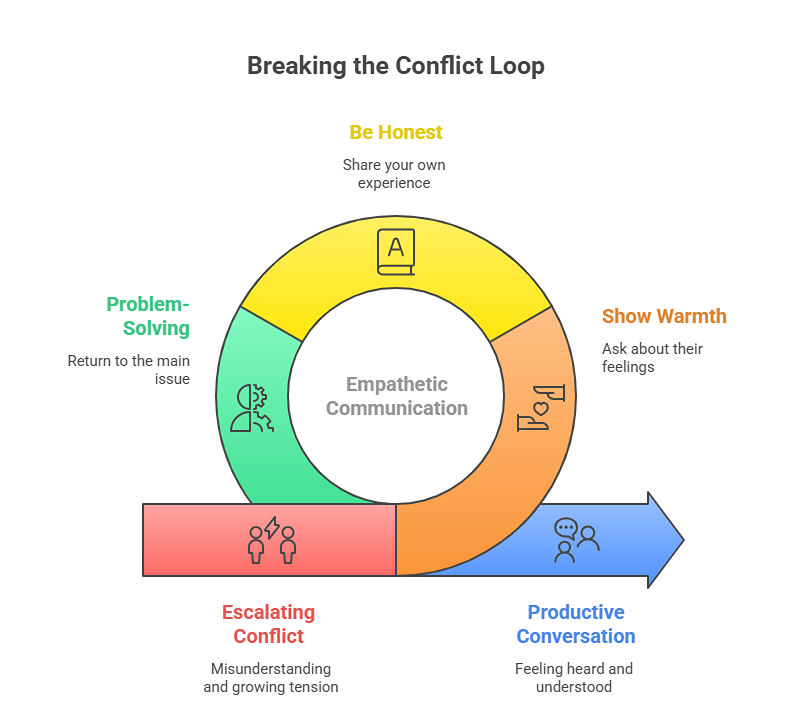Why “Being the Adult in the Room” Can Make Conflict Worse

Most people try to handle conflict by staying calm, rational, and solution-focused. It’s a reasonable instinct after all, staying composed should help, right?
But in team dynamics, especially when tensions are high, this approach can actually escalate things.
During a recent team development workshop, we looked at a concept called the conflict loop, based on Transactional Analysis. It explains why certain interactions go wrong , and keep going wrong, even when we’re trying to do the right thing.
What is the conflict loop?
The conflict loop is a communication pattern that plays out like this:
One person takes a controlling or critical tone
The other reacts defensively. They push back, shut down, or become passive-aggressive
The first person doubles down, and the cycle continues
Both people end up feeling misunderstood and frustrated. Trust erodes and the conflict becomes embedded.

And here’s the bit that surprised many people in the room:
Trying to fix the conversation by “being the adult in the room” often makes it worse.
Why logic alone doesn’t work
When you try to stay factual and calm during conflict, your intention might be to de-escalate.
But the impact is often different.
If someone’s feeling hurt, angry, or disrespected, a logical tone can come across as cold, dismissive, or even patronising, especially if emotions haven’t been acknowledged first.
That’s how your calm “Adult” voice can get misread as “Critical Parent.”
And the loop keeps spinning.
So what does work?
To interrupt the conflict loop, you need to sequence your responses differently.
Here’s a better approach:
Start with warmth or empathy
Acknowledge what the other person might be feeling. Ask how they’re doing. Show you’re open to hearing them.Be honest about your own experience
Keep it open and non-blaming. Use “I” statements to say how things are affecting you.Then move into solution mode
Once the emotional heat has reduced, shift to facts, clarity, and problem-solving.
That order matters. People need to feel heard before they can hear you.
Why it matters for teams
Understanding the conflict loop helps explain why some workplace tensions become chronic. It’s not just about one person being “difficult.”
It’s about the pattern both people get drawn into, often without realising it.
Noticing the loop gives you more options. It creates space to respond, rather than react. And it helps teams build more trust and psychological safety over time.
Final thought
Learning about the conflict loop gave me a clearer lens for spotting when communication is going off track, in teams I work with, and in my own responses too.
Conflict isn’t always avoidable, but unproductive cycles are.
And often, a small shift in how we show up is enough to change the tone.

Comments